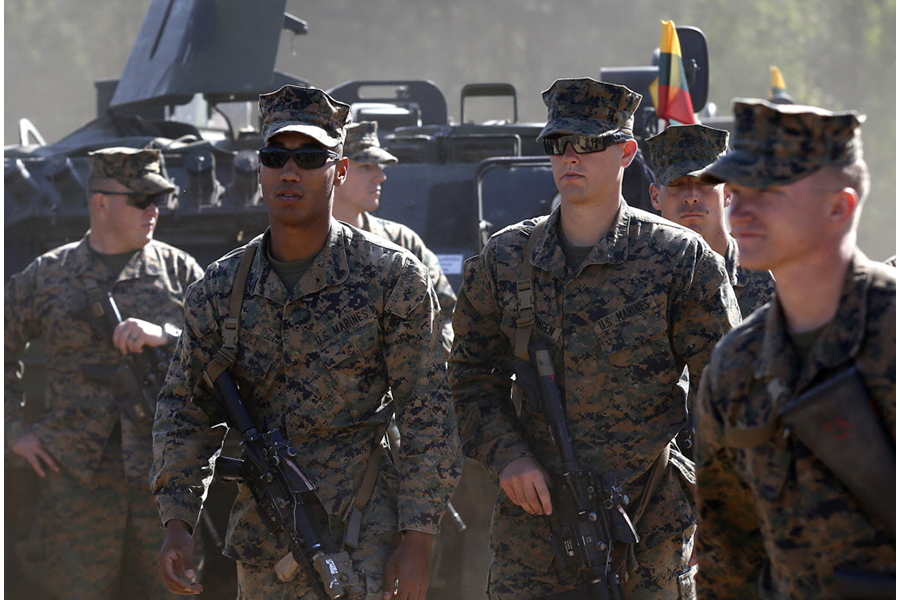US is reported to be moving heavy arms to Baltic, Eastern Europe
Loading...
| Washington
The United States plans to store heavy military equipment in the Baltics and Eastern European nations to reassure allies made uneasy by Russian intervention in Ukraine, and to deter further aggression, a senior US official said on Saturday.
"We will pre-position significant equipment," the official said, commenting on a New York Times report that the Pentagon was poised to store battle tanks, infantry fighting vehicles, and other heavy weapons for as many as 5,000 troops.
Poland and Lithuania both confirmed they were in talks with Washington on stationing heavy arms in warehouses in the region.
"The threats to the Baltic region have increased. This has been discussed many times and I view positively [the fact] that talks lead to concrete decisions which, I think, will become a reality," Lithuanian Prime Minister Algirdas Butkevicius told Reuters.
Poland's defense minister said he expected a decision soon.
"During talks in Washington in May I have been assured that the decision will be taken soon," said a ministry tweet, quoting Defense Minister Tomasz Siemoniak. "This is another step to increase US presence in Poland and the region."
The US official, who spoke on condition of anonymity, declined to comment on the details of the report, which cited US and allied officials.
The move would be the first time Washington has stationed heavy military equipment in the newer NATO member states in Eastern Europe and the Baltics that were once under the Soviet sphere of influence or were part of the Soviet Union.
The proposal, which seeks to reassure European allies in the wake of Russia's annexation of Ukraine's Crimea in March 2014, is expected to be approved by US Defense Secretary Ash Carter and the White House before a NATO defense ministers' meeting in Brussels this month, the report said, quoting senior officials.
Asked about the article, a Pentagon spokesman said no decision had been made about the equipment.
"Over the last few years, the United States military has increased the pre-positioning of equipment for training and exercises with our NATO allies and partners," Colonel Steve Warren said.
"The US military continues to review the best location to store these materials in consultation with our allies," he said in a statement. "At this time, we have made no decision about if or when to move to this equipment."
As it now stood, the Times said, the proposal envisaged that "a company's worth of equipment, enough for about 150 soldiers, would be stored in each of the three Baltic nations: Lithuania, Latvia and Estonia. Enough for a company or possibly a battalion, or about 750 soldiers, would be located in Poland, Romania, Bulgaria and possibly Hungary."
(Reporting by Sandra Maler and Arshad Mohammed, additional reporting by Marcin Goettig in Warsaw and Andrius Sytas in Vilnius)







